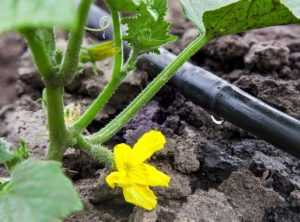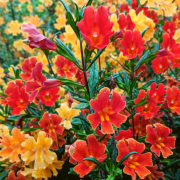Fire-Smart and Water-Wise: Tips for a Resilient Landscape
Summer is upon us! If you’ve kept a garden or maintained a landscape here in Sonoma County, you know just how thirsty plants can get in the dry season. Luckily, many of the guiding principles for having a water-wise garden in our climate have the co-benefit of being fire-smart. Many folks are familiar with the concept of defensible space, but keeping that buffer around homes and buildings to reduce the threat of fires doesn’t mean we can’t have beautiful plants in the landscape. Defensible space can simply mean a properly maintained garden or yard!

Perhaps the most important factor is maintenance. The most fire-smart landscape design in the world is not very helpful for reducing risk if it isn’t properly maintained. First, you want to keep the plants on your landscape hydrated throughout the dry season. Summer irrigation, especially with water-wise methods like drip irrigation and greywater, is one of the best tools in your toolbox. Using highly efficient drip irrigation, along with a properly programmed timer, minimizes evaporation and makes sure that the water you’re sending out into the landscape is reaching its intended target: your plants! As you may have guessed, the higher a plant’s moisture content, the more resistant to fire it will be.
It is likewise important to remove dead plant material from your landscape, from mature trees and shrubs, to branches, firewood, and debris like leaves, needles and cones. Whether on the ground or still attached to living plants, this dead material is prime fuel for fires, and if left unmanaged can undo your hard work in creating defensible space. For this reason, it’s a good idea to choose plants that don’t need excessive maintenance – after all, we want to enjoy our landscapes, not just work in them!
That brings us to plant selection. There’s no such thing as a fireproof plant, but some plants are far more combustible than others. These typically have waxy, oily or resinous leaves or stems. Juniper, for example, is highly combustible and is sometimes referred to by firefighters as the “gasoline plant.” Ornamental grasses and berries are similarly high risk, and if you choose to include them in your landscape, consider doing so sparingly and away from the home. Deciduous plants will typically have more moisture content in their leaves in summer months than evergreens, and less fuel during their dormant season. Non-woody deciduous and low-growing plants are good options.
It is important to remember that fire is part of our region’s ecology. Native plant species adapted to cycles of wildfire burns over millennia, and many have developed fire resistant strategies. Natives will also require less water and maintenance in summer months compared to ornamentals and plants from other bioregions. Here are some examples of fire-smart natives.
- Trees: Pacific dogwood, big leaf maple, oak species, coast redwood
- Shrubs: Bush anemone, toyon, coffeeberry
- Perennials: Yarrow, sticky monkey flower, California fuschia
- Groundcovers: Creeping thyme, creeping mahonia, purple stonecrop
Whichever plants you choose for your landscape, be sure to account for your topography, the vegetation or fuel load surrounding your site, and proper spacing as outlined by Sonoma County’s Fire Ordinance. You can find more information and resources through your local fire department, CAL Fire and Fire Safe Sonoma. As temperatures continue to climb, be sure to stay fire-smart, be water-wise, and enjoy the beauty of our watershed!




